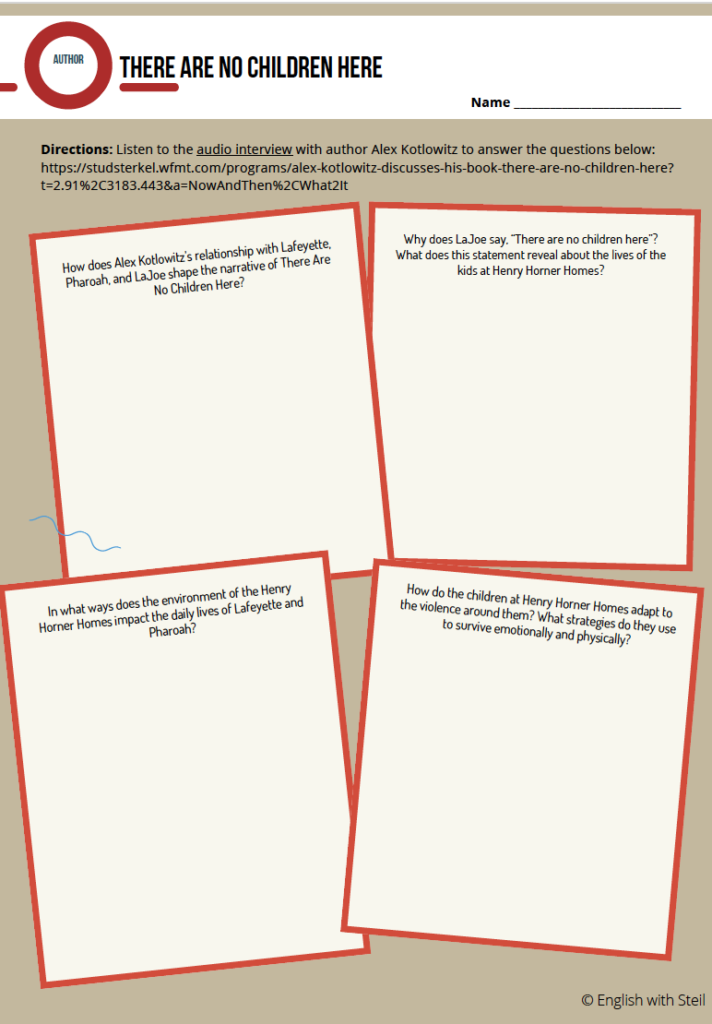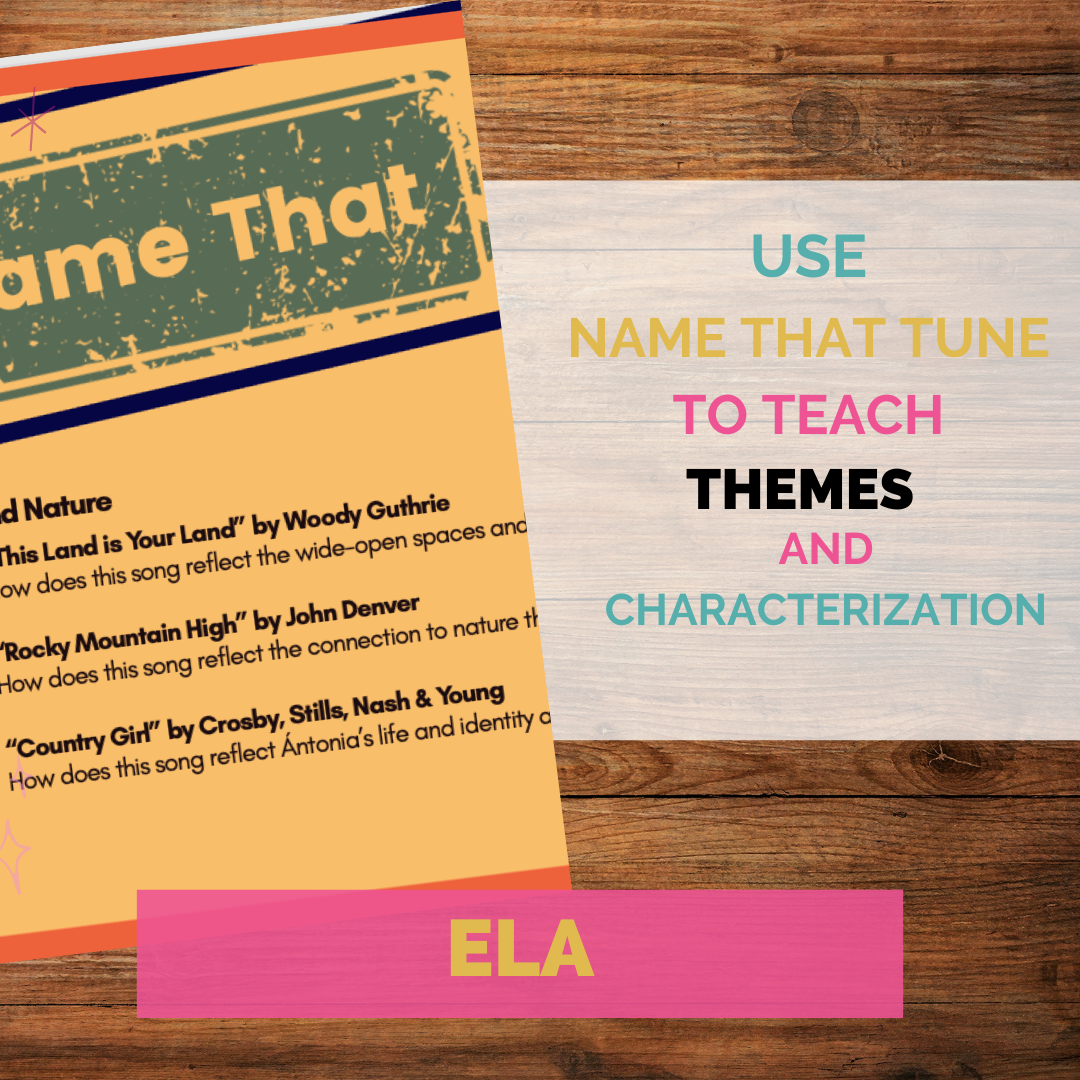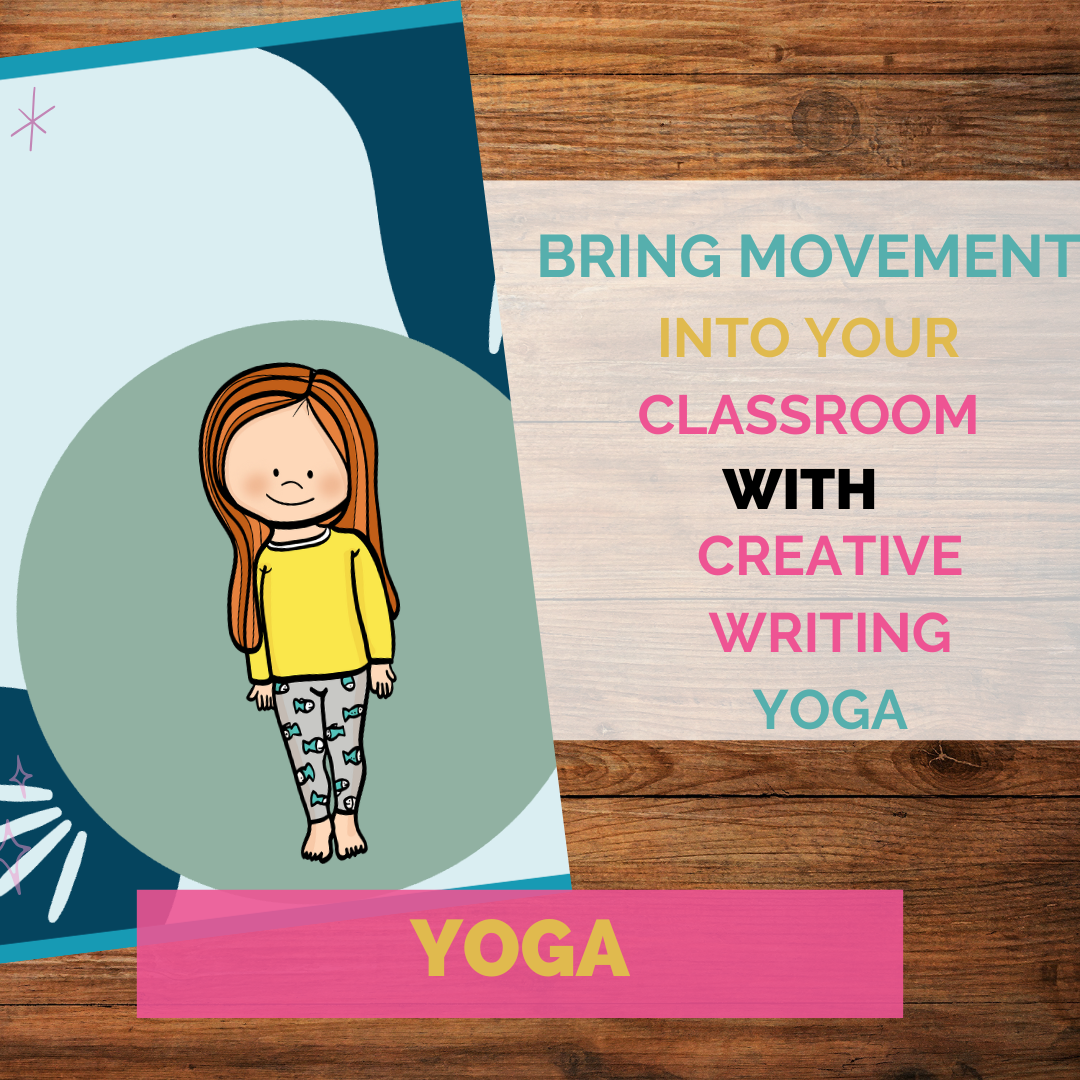As educators, we constantly seek literature that not only engages students but also broadens their understanding of the world. Alex Kotlowitz’s There Are No Children Here is one of those rare nonfiction books that does both. This deeply moving work of investigative journalism follows the lives of two young brothers, Lafeyette and Pharoah Rivers, as they grow up in Chicago’s Henry Horner Homes, a public housing project plagued by violence, poverty, and systemic neglect.
But this book is not just about hardship—it’s about resilience, dreams, and the power of storytelling. Through Kotlowitz’s detailed reporting and human-centered narrative, students step into the reality of urban poverty in America, developing empathy and critical thinking skills along the way.
If you’re looking for a compelling, discussion-rich book to add to your curriculum, There Are No Children Here is an essential choice. Below, we’ll explore why this book is so powerful, how to teach it effectively, and strategies to make it a transformative reading experience for your students.
The Value of Teaching Nonfiction
Key Themes to Explore in There Are No Children Here
1. Resilience in the Face of Adversity
Despite their circumstances, Lafeyette and Pharoah show incredible resilience. Their struggles are not just about survival—they are about finding moments of joy, hope, and determination.
💡 Discussion Prompt:
- What are some ways the boys demonstrate resilience?
- How do community, family, and personal strength help people navigate hardship?
2. The American Dream—Real or Myth?
Pharoah dreams of being successful and escaping his environment, but the reality of systemic poverty makes this incredibly difficult.
💡 Activity Idea:
- Have students compare Pharoah’s dreams to the classic idea of the American Dream.
- Ask: What does “success” mean for different people in different circumstances?
3. The Loss of Childhood Innocence
Lafeyette and Pharoah are forced to grow up too quickly due to their environment. The violence, drugs, and instabilityaround them strip away their childhood.
💡 Discussion Prompt:
- What are some moments in the book that highlight lost innocence?
- How does environment shape a child’s ability to be carefree?
Engaging Classroom Activities for Teaching There Are No Children Here
1. Thematic Journals
- Have students keep a journal where they reflect on resilience, inequality, and dreams in the book.
- Ask them to connect the themes to current events or their own experiences.
2. Socratic Seminars and Debates
- Organize class debates on questions like:
- Should the government be responsible for fixing housing inequality?
- Is violence in urban communities a systemic issue or a personal choice?
- Have students support their arguments with evidence from the book and outside research.
3. Research Projects on Urban Poverty
- Assign students to research the history of public housing, redlining, or education inequality in the U.S.
- Have them present their findings through multimedia projects, photo essays, or podcasts.
4. Fiction vs. Nonfiction Comparative Analysis
- Pair There Are No Children Here with a novel like The Outsiders or To Kill a Mockingbird.
- Compare how fiction and nonfiction address social issues.
- Ask: Which is more powerful in creating change—true stories or fictional ones?
5. Film Adaptation Analysis
- Show the film adaptation of There Are No Children Here and have students compare it to the book.
- Discuss: What was changed or left out, and how does that impact the story’s message?
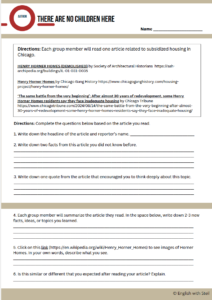
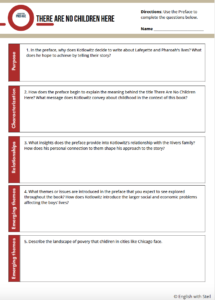
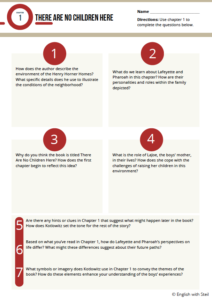
Important Themes to Explore
There Are No Children Here touches on several themes that are as relevant today as they were when the book was published in 1991. These themes provide rich ground for classroom discussion and critical thinking:
Resilience in the Face of Adversity: Kotlowitz’s portrayal of Lafeyette and Pharoah’s lives highlights the incredible resilience of children growing up in harsh environments. Despite the violence, instability, and poverty surrounding them, the boys demonstrate moments of hope, courage, and tenacity.
Dreams and Dreams Deferred: Throughout the book, the characters—especially Pharoah—harbor dreams of escaping their circumstances, but the reality of systemic poverty often dims those dreams. The novel prompts students to think about the importance of dreams and how societal structures can hinder or support the pursuit of those aspirations.
Loss of Childhood Innocence: One of the most heartbreaking aspects of the book is the premature loss of innocence experienced by the children in the Henry Horner Homes. Kotlowitz poignantly captures how violence and trauma strip away the carefree nature of childhood, leaving these boys with adult responsibilities at a young age.
Systemic Inequality: The novel paints a vivid picture of the ways systemic failures—whether in housing, education, or policing—contribute to the struggles of low-income communities. By exploring these themes, students can better understand how institutions shape the lives of individuals, especially those in marginalized communities.
Investigative Journalism as a Teaching Tool
One of the most remarkable aspects of There Are No Children Here is the way Kotlowitz immerses himself in the lives of the Rivers family. As an investigative journalist, he didn’t just report from a distance—he spent a year living with and observing the family, building trust, and telling their story with compassion and integrity. This type of journalism opens a window into the human side of systemic issues, something that raw statistics or news reports can’t always capture.
Teaching this book offers a fantastic opportunity to introduce students to the role of investigative journalism. Discuss with your class how Kotlowitz gathered his information, the ethical considerations he faced, and how his reporting helped bring attention to issues of public housing and urban poverty. It’s a great way to show students the impact that journalism can have on public policy and awareness.

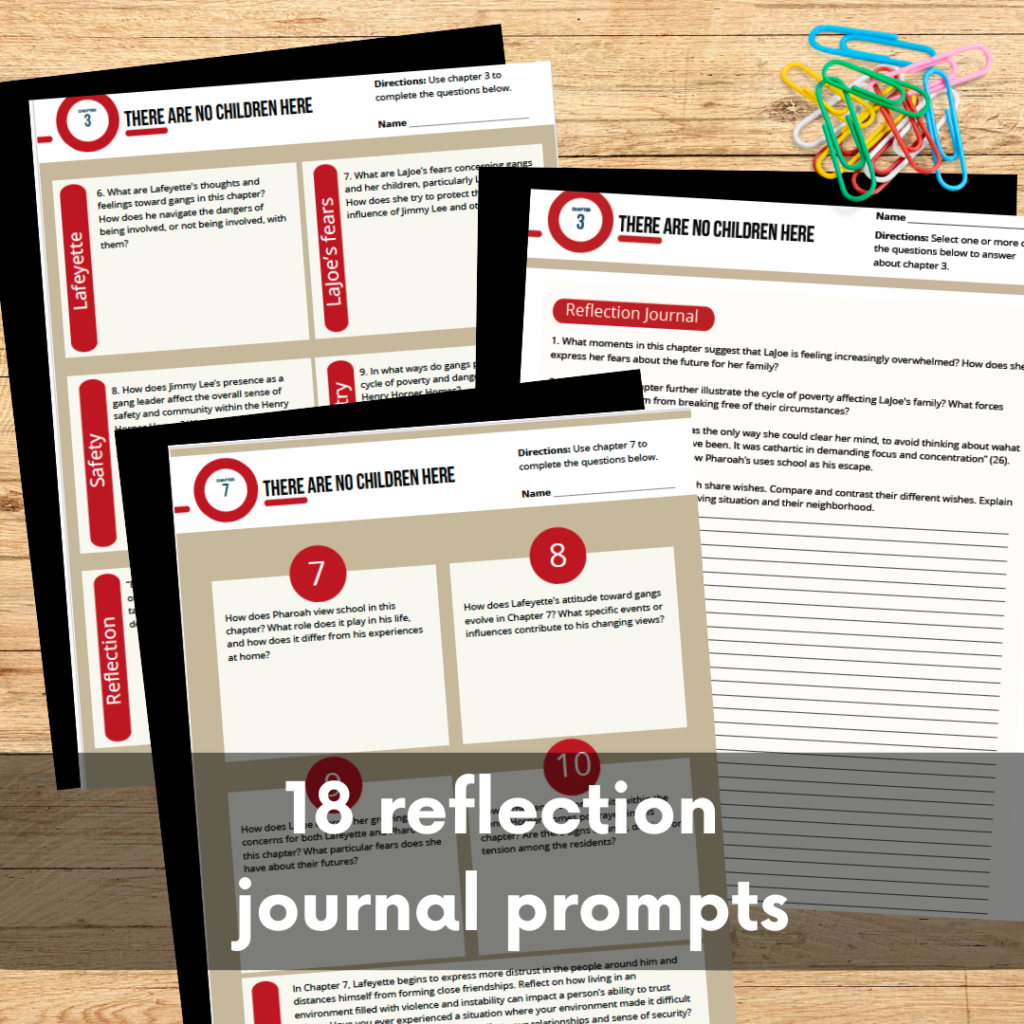

Ideas for Teaching There Are No Children Here
To make the most of There Are No Children Here in your classroom, consider the following teaching strategies:
Thematic Journals: Encourage students to keep a journal as they read, focusing on themes like resilience, the impact of poverty, and lost childhood. Ask them to reflect on these themes in their own lives or in the world around them.
Research Projects: Have students investigate a current issue related to poverty, education, or public housing in their own communities. This can help students connect the themes of the book to present-day realities, fostering a deeper understanding of how these issues persist.
Debates and Socratic Seminars: Hold a class debate or seminar on topics such as the role of government in public housing, the ethics of journalism, or the impact of violence on youth. This allows students to engage critically with the material and consider different perspectives.
Comparative Analysis with Fiction: Pair There Are No Children Here with a fictional work that deals with similar themes, such as To Kill a Mockingbird or The Outsiders. Students can compare how fiction and nonfiction address issues like poverty and injustice, and how each genre brings different strengths to the conversation.
Creative Projects: Allow students to create multimedia projects that express their response to the book’s themes. They could make short films, podcasts, or photo essays that capture the challenges faced by communities like Henry Horner or those in their own cities.
- Film: Show students the movie version of There are No Children Here and have students compare and contrast the work in two different mediums.
The Power of Stories Like There Are No Children Here
Teaching There Are No Children Here isn’t just about reading a book—it’s about helping students engage with real-world issues, develop critical thinking skills, and cultivate empathy.
By exploring systemic poverty, resilience, and the role of journalism, students gain a deeper understanding of the world and their own place in it. This book challenges them to think beyond their own experiences and become more socially conscious and compassionate individuals.
📚 Are you planning to teach There Are No Children Here? What strategies have worked for you? Let’s share ideas in the comments below! 👇✨


